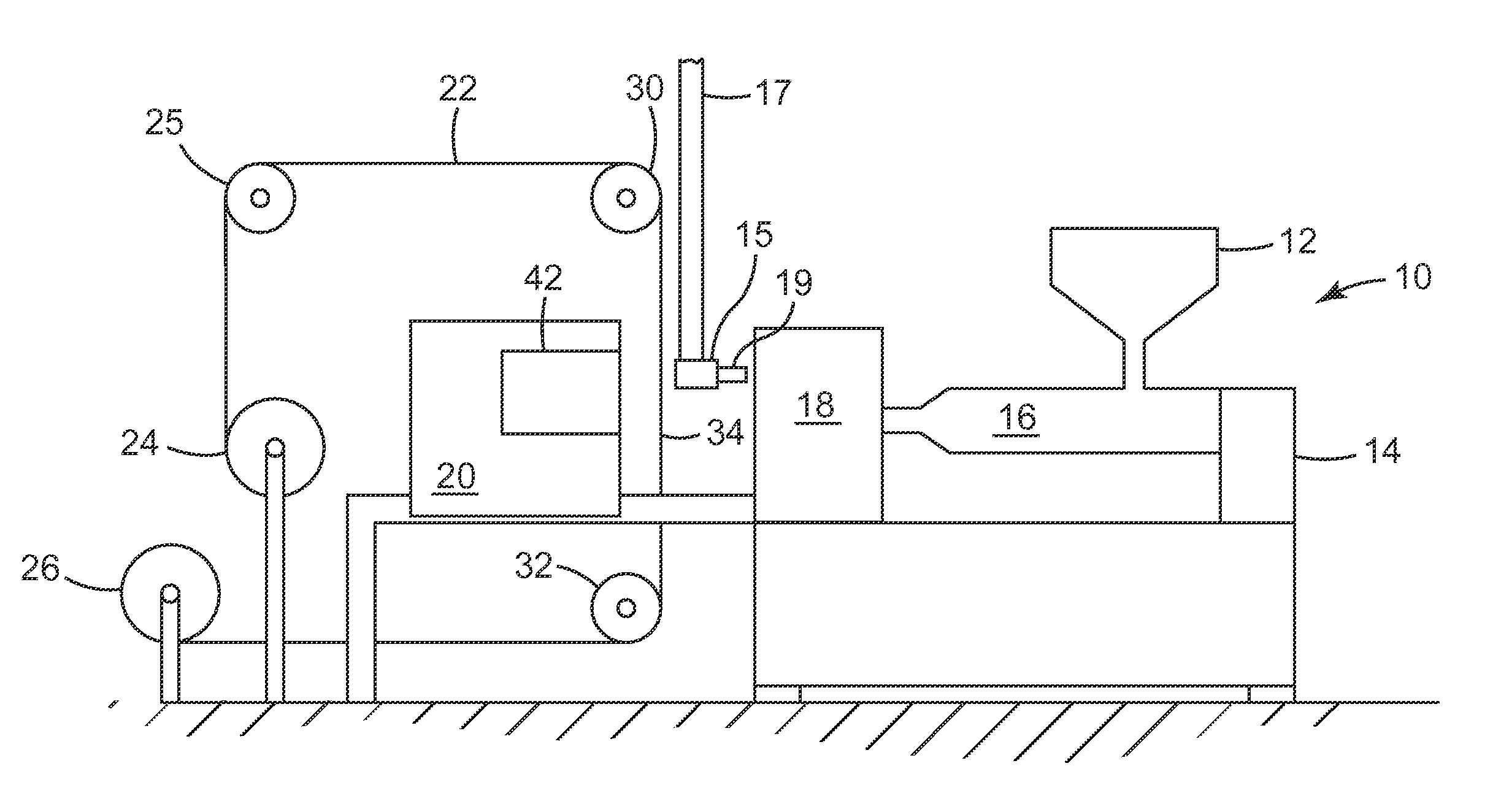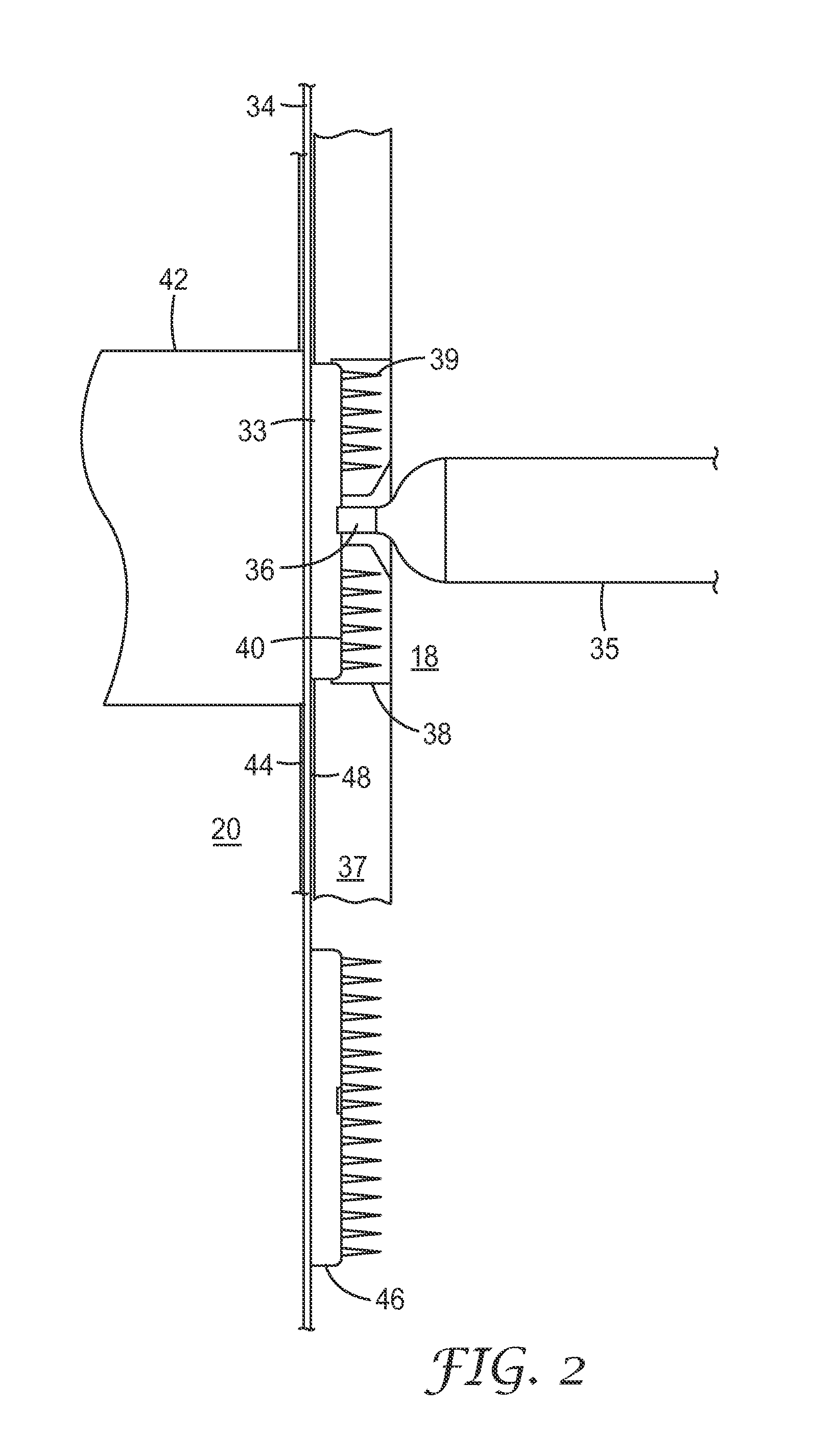Ultrasonic injection molding on a web
a technology of injection molding and ultrasonic injection, applied in the field of ultrasonic assisted molding methods, can solve the problems of difficult molds and subsequent processing and handling of molded articles having delicate structures thereon, and achieve the effects of shortening mold cycle times, good fidelity, and good reproduction of very small mold features
- Summary
- Abstract
- Description
- Claims
- Application Information
AI Technical Summary
Benefits of technology
Problems solved by technology
Method used
Image
Examples
example
[0082]An 8 cavity center gated hot runner mold was used to deliver molten polycarbonate resin at 293° C. to a circular mold cavity containing an insert having 1288 microcavities for microneedles 250 μm tall with an aspect ratio of about 3, a pitch (W) of 275 μm and tips having a 5 μm radius, to be molded on a circular land or disc about 1.4 cm in diameter. Experiments were conducted with and without EMI heating using a pneumatically driven linear actuator to place an external 1500 W EMI heater between the first and movable members of the injection mold. Electromagnetic induction was applied for periods ranging from 3 to 8 seconds using a gap of 1 mm between the end of the induction coil housing and the plane of the mold plate face. A hot manifold system was used to feed polymer melt to the mold cavities via the hot runners. A polycarbonate carrier web was indexed between the first and movable mold members.
[0083]Vertical movement of the linear actuator for the electromagnetic inducti...
PUM
| Property | Measurement | Unit |
|---|---|---|
| Fraction | aaaaa | aaaaa |
| Height | aaaaa | aaaaa |
| Surface | aaaaa | aaaaa |
Abstract
Description
Claims
Application Information
 Login to View More
Login to View More - R&D
- Intellectual Property
- Life Sciences
- Materials
- Tech Scout
- Unparalleled Data Quality
- Higher Quality Content
- 60% Fewer Hallucinations
Browse by: Latest US Patents, China's latest patents, Technical Efficacy Thesaurus, Application Domain, Technology Topic, Popular Technical Reports.
© 2025 PatSnap. All rights reserved.Legal|Privacy policy|Modern Slavery Act Transparency Statement|Sitemap|About US| Contact US: help@patsnap.com



